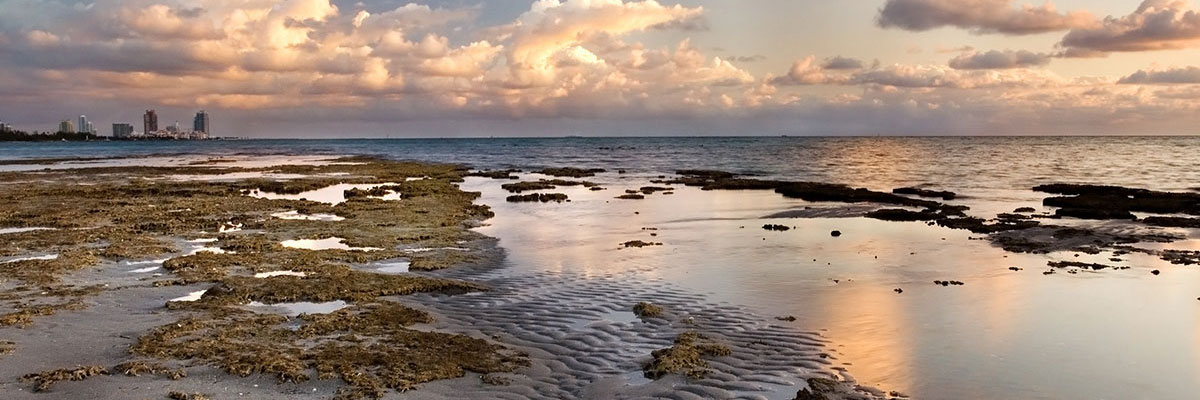Exploring the Beaches of Key Biscayne

Key Biscayne is fortunate to be bounded on it’s eastern side by beautiful beaches extending the entire length of the Island. The beaches can be divided into 3 areas distinguished by the managing government agency. The northern end of the Key, Crandon Park falls under the jurisdiction of Miami-Dade county. The central portion of the beach is managed by the Village of Key Biscayne and the southern portion, Bill Baggs Park, by the State of Florida. Hobie Island, to the north of Key Biscayne, is home to 2 beaches — Virginia Key Beach and Hobie Island Beach.
All three areas have public access, with some public access limited by condominiums and hotels on the Village portion. The two parks have entry fees. However, the entire length of the Key is accessible for walking on the ocean side of the high tide intrusion. The beaches provide environmental protection to the Key as well as significant economical benefits. As well, the beaches and associated sand dunes provide protection from most storm induced salt water inundation of neighboring residential areas. Economically, for example, the beaches provide opportunities for both residents and visitors to shop at local stores to buy provisions to participate in the recreational activities provided by the beaches. These activities include swimming, sun bathing, recreational fishing, launching of surf board type craft, snorkeling, etc.
However, the beaches are subject to both natural and man-made hazards. Natural hazards include storm induced beach erosion, rip tides, jelly fish, and damage to sea grass and sand dunes. Man-made damage includes trash, pollution caused by vessel discharges and oil spills, and beach front construction that does not factor in the natural path of sand along the island’s boundary. Protection from these hazards is complicated by the often random nature of their occurrences which can delay implementation of mitigation strategies. Citizen Scientist understanding of these hazards provides means to reduce their impacts and raise participation in hazard control activities when possible, limitting the damage done to this valuable Key resource.
Here are some great resources to help you learn and explore the beaches of Virginia Key & Key Biscayne:
Relative Environmental Questions
These Relevant Environmental Questions promote environmental awareness and serve as a starting point for citizens to begin making environmental observations. Citizens will soon be able to submit their environmental findings and answers to these questions with the launch of the Record page. Please be sure to follow our Facebook page for the latest news and updates!
- Have you noticed any differences in the water levels surrounding the Key, for example higher or lower tides affecting the beaches?
- Have you noticed any changes in the extent of the beaches and if so, where?
- Have you noticed any areas where the wrack line (insert picture and description) has been damaged or destroyed? If so, where?
- Have you noticed a change in the frequency of turtle nesting? If so, on what beach?
- Have you seen any marine debris while swimming, snorkeling, or diving? If so, where?
- Have you noticed a change in the number of beach goers? If so, which beach?
- Have you seen areas where the dunes have been damaged by human traffic? If so, where?
- Would you consider Key Biscayne and Virginia Key beaches to be in good condition? Why or why not?
More Relative Environmental Questions
Lists of Relevant Environmental Questions (REQs) can be found in each of the Explore sections of the Citizen Scientist Project’s Lab. Before going out to explore the environment in or around Key Biscayne, Virginia Key, or Hobie Island, you can review the REQs to have a better idea of what to look for during your exploring.
Once your exploration is complete, and you are ready to answer the REQs, just jump over to the Record section of the Citizen Scientist Project’s Lab to submit your answers.

